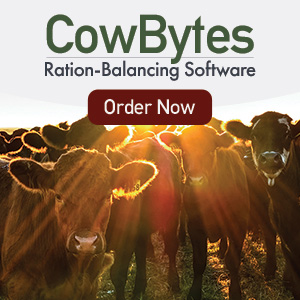Key Takeaways from the Nutrition Webinar Series for the Winter-Feeding Season
Whether dealing with the aftereffects of drought or flood, many beef cattle producers are dealing with the pressures of low feed quality and quantity this winter. Last year, the BCRC held a three-part webinar series on nutrition management covering everything from feed testing to maximizing low-quality feeds. Following are highlights from the series that could be helpful heading into the winter-feeding season.
Nutrition Part I: No Longer a Mystery – Feed Testing to Improve Herd Health
Feed testing helps beef producers know what they are feeding and how to make the best use of what they have. The first webinar in the nutrition management series features Dr. Breeanna Kelln and Tara Mulhern Davidson, who discuss feed testing, its challenges and the opportunities it presents to cattle farmers.
What We Learned
- Feed testing is an insurance policy. (40:41) Being proactive can help address potential wrecks before they happen. Test feeds, monitor water quality and consider factors like drought, early frost, mycotoxins and nitrates.
- When feed is scarce, you may be feeding products you are less familiar with such as discarded grains, by-products, kochia or other weeds, and salvaged or damaged crops. Feed testing becomes especially important in these scenarios to show the nutritional quality of the feed and to make you aware if any nutrients need supplementing.
- Winter feeding is the largest cost for most operations and can often occur during harsh weather conditions. (9:53) A balanced ration is needed to get cattle through the season in a cost-efficient way that also meets their nutritional needs. Understanding what kind of punch your feed is packing is necessary to achieve your feed and nutrition goals.
- While sampling and testing before feeding is ideal, any feed test done at any point is better than no feed test at all. (13:59)
- Investing in feeding equipment or infrastructure can feel like a big investment at first but can unlock a lot of feed management potential for an operation. (1:00:51)
- Gain insight on how to feed sample (16:40), where to send it (18:33) as well as an easy DIY method to measure feed dry matter. (29:10)
Nutrition Part II: Hitting the Bullseye with Targeted Feeding – Feeding for Performance
While the first webinar in the series introduced the concept of why and how to feed test, the second nutrition webinar shared what to do with the feed test. Melissa Atchison and Katie Trottier shared many practical tips for ration balancing and targeted feeding.
What We Learned
- Understanding your resources, optimizing feed budgets and ensuring proper nutrition at each stage of production are crucial for maximizing performance and profitability.
- When facing issues, such as fertility problems, don’t hesitate to investigate further and address potential nutritional deficiencies. (41:12) In the world of cattle farming, a well-thought-out feeding plan can make all the difference in your bottom line.
- All forage is not created equal. (8:11) It’s challenging to determine the quality of forage based solely on visual inspection. Even experienced producers found it challenging to rank forage samples in terms of quality. While they could identify the best and worst, the middle ground was tricky. This emphasizes the need for feed testing to accurately assess forage quality.
- A feed budget created in the fall helps ensure stored forages are used effectively over the coming months. (9:47) This involves taking an inventory of available feed and devising a plan to use it efficiently. Nutrient-dense forages are fed when cattle have higher nutrient requirements, and lower-quality forages are used when demand is lower. This strategy is crucial for optimizing resources and reducing feeding costs.
- Correcting nutritional deficiencies through targeted feeding strategies can lead to a considerable increase in calf crop, which translates to a net benefit, even when considering the cost of an expensive mineral blend. (41:15) It’s essential to look beyond immediate costs and consider long-term benefits, including reduced heifer retention and improved cow longevity.
Nutrition Part III: Making the Most Out of Low-Quality Forage – Tips for Improving Animal Performance
Maximizing low-quality forage for healthy cattle is a multifaceted endeavor. While challenges like forage shortages and low-quality feed sources may be beyond a producer’s control, a proactive approach to understanding, testing, and optimizing forage is essential. Learning from real-life experiences, building drought plans, and fostering strong relationships within the farming community can make a world of difference in maintaining the well-being of cattle and the sustainability of your operation as highlighted by Dr. Gabreil Ribeiro and Kim Jo Bliss.
What We Learned
- Low-quality forage is characterized by low digestibility, resulting in reduced energy availability and is often less palatable, leading to reduced Dry Matter Intake (DMI) and performance. (6:32) However, there are many ways to improve the digestibility of these forages (25:17):
- Ration balancing based on class of cattle, environment and nutrient requirements.
- Post-harvest treatments
- Protein supplementation using dried distillers grains (DDGs), and by-products of grain processing like soybean meal and canola meal, can improve fibre digestion. (28:53)
- Non-protein N sources like urea can also be used, but at a rate of no more than 30% of the crude protein content.
- Forage quality can vary based on season, harvest practices, storage method, etc. (13:17)
- Be cautious when feeding low-quality feed and ensure adequate water access (12:45) and watch for signs of impaction or loss in body condition score.
- Planning ahead for drought and low-quality forage situations is vital, as extreme weather events are likely to become more common. (45:34)
- Focus on long-term forage supply, feed contracts and cost analysis.
- Establish relationships for feed access and transport in your region.
- Explore diversified crop options and have a solid inventory of available feed resources.
- Emphasize communication, sharing stories and supporting each other during challenging times.
Additional Resources
- Feed Quality, Testing and Analysis (BCRC topic page)
- Tool for Evaluating Feed Results (BCRC decision tool)
- Nutrition in Beef Cattle (BCRC topic page)
- Drought Is Not Just a Summer Challenge (BCRC post)
- 2023-2024 BCRC Webinar Series Registration
Click here to subscribe to the BCRC Blog and receive email notifications when new content is posted.
The sharing or reprinting of BCRC Blog articles is welcome and encouraged. Please provide acknowledgement to the Beef Cattle Research Council, list the website address, www.BeefResearch.ca, and let us know you chose to share the article by emailing us at info@beefresearch.ca.
We welcome your questions, comments and suggestions. Contact us directly or generate public discussion by posting your thoughts below.

